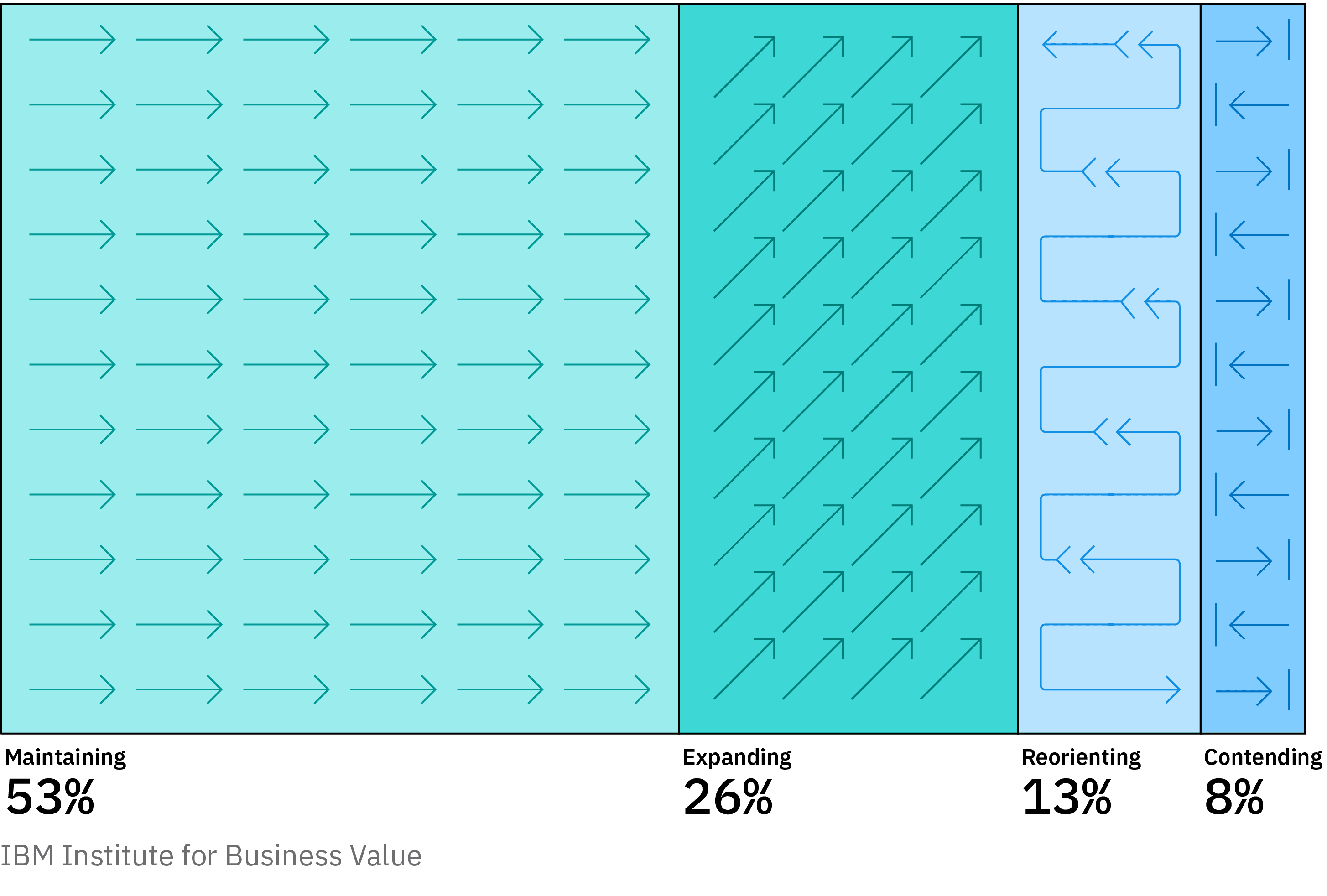Telecom 2030: Dial in for a decade of opportunity
Telecommunications industry executives are expecting seismic shifts in the world by 2030, yet many communications service providers (CSPs) may not reflect these new realities in their strategic planning. Eye-opening research from the IBM Institute for Business Value (IBM IBV) suggests many CSPs expect to focus on adapting capabilities for future needs rather than proactively pursuing growth. This approach could leave them vulnerable to competitive risks and blind to new services opportunities.
To explore what the telecommunications landscape might look like in 2030, we conducted an extensive survey of more than 1,800 telecom executives in 23 countries. This quantitative research was supplemented by individual interviews with global CSP leaders.
How do industry leaders see the world in six years? Among the survey findings:
- Artificial intelligence (AI) evolves to predicting and controlling the personal and work lives of most of the population.
- Digital surveillance is ubiquitous, and cybersecurity passwords are nearly obsolete.
- Consumer connectivity needs take new forms, as personal flying vehicles and brain interface devices start to scale.
With such dynamic technological advances on the horizon, the telecom industry should be embracing equally dynamic strategies. But our analysis of the survey results reveals a mixed picture of four strategic approaches that CSPs may take.
The race to 2030: Four potential strategic approaches for telecommunications companies

Strategy A: Maintaining
Slightly more than half of respondents indicate today’s priorities for their telecom companies will be sufficient to meet customer demands in 2030. They appear to be staying the course with providing traditional telecom services in developing countries and supporting the digital transformation of enterprise customers with the continued rollout of 5G networks.
“Infrastructure will continue to be critical, but you’re going to need to move up the stack to be of greater value to B2B customers, and if you don’t, you’ll end up in a commodity-based environment. And telcos don’t win in commodity-based debates.”
David Burns, Enterprise Group Executive, Telstra
Strategy B: Expanding
Only 26% represent organizations that are eagerly embracing multiple new technologies to energize growth. They indicate plans to evolve their business models and expand revenue streams while boosting the customer experience for both consumers and businesses. Technologies include cloud, AI, machine learning, edge computing, quantum computing, and Internet of Things (IoT) devices.
Strategy C: Reorienting
A small group of telecoms (13%) could be repositioning themselves as back-end providers of network services and infrastructure. This outlook marks a significant business model shift for these CSPs as they serve other companies, such as mobile virtual network operators (MVNOs), technology providers, and content providers.
Strategy D: Contending
The smallest portion of organizations (8%) indicate they could be crisis-focused, contending with disruptions ranging from geopolitical conflicts to wildfires and floods. These heightened threats to networks require CSPs to use both traditional and generative AI to anticipate disruption—without letting reactivity supplant business planning. At the same time, the telecom sector must address its own contributions to climate change with a focus on sustainability.
“Heightened threats should not get in the way of business. But they do require CSPs to assume and proactively plan for the worst.”
Ibrahim Gedeon, CTO, Canadian-based TELUS
Most CSPs will have some elements of each strategy at play. We have identified four steps organizations can take to be resilient against uncertainty and open to new opportunities, regardless of how the future unfolds.
Download the report to delve into each strategic approach and explore how telecom operators can act now, including a specific action guide for each step to help leaders prime their organizations for 2030.
Meet the authors
Stephen Rose, General Manager, Global Industries, IBMRahul Kumar, Senior Partner and Vice President, IBM Consulting Global Industry Leader for Telecom and Media
Priya Kurien, Global Telecommunications, Media, & Entertainment Leader, IBM Institute for Business Value
Originally published 23 January 2024


